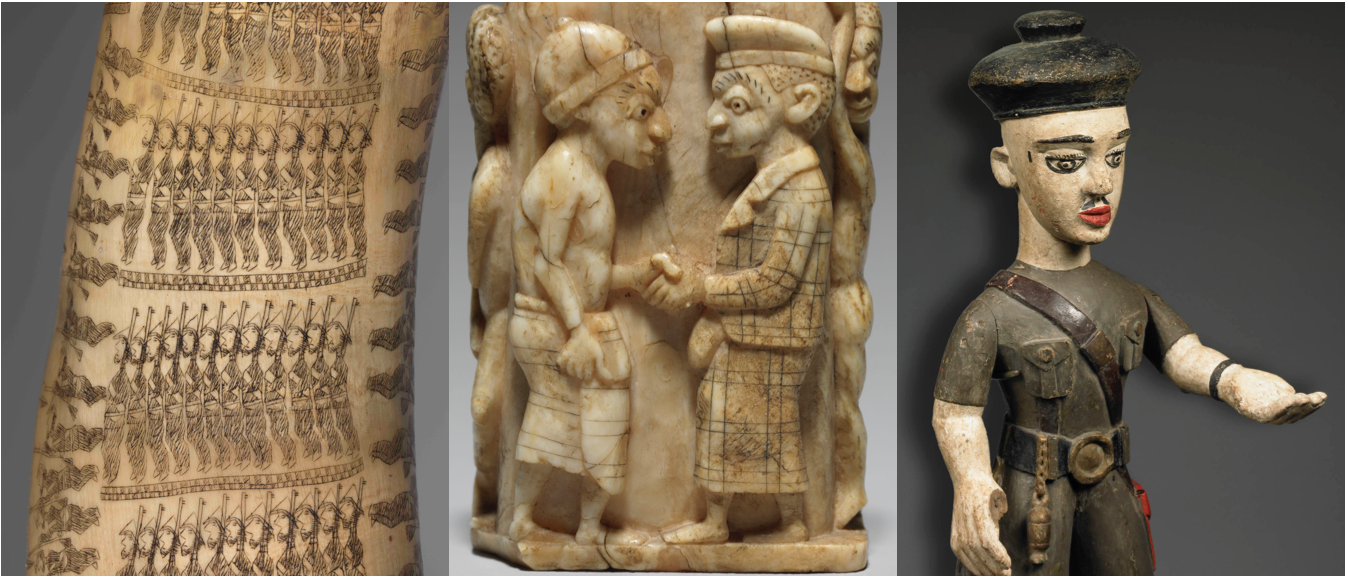Pair of Engraved Nguni Cattle Horns
South Africa, Zulu
19thCentury
Cow horn, soot, wood
Gift of Charles S. Ackerman. 2015.35.1
This pair of Nguni cattle horns is engraved with scenes of the Anglo-Zulu War of 1879. The Anglo-Zulu war was instigated by the British, who wanted to unite the South African Republic founded by the Dutch Boers and the independent Kingdom of Zululand ruled by King Cetshwayo in order to control the diamond mines in region. In 1878, without the knowledge of the British government, Sir Henry Bartle Frere, high commissioner for the British Empire in South Africa, issued several ultimatums to Cetshwayo, deliberately provoking him to fight a war they were confident he would lose. The British were astonished to find that the Zulus were powerful and disciplined fighters. The Zulu army caught the British unprepared and won the first encounter of the war, the battle of Isandlwana. Though the British eventually won the war, the victors at Isandlwana garnered enormous popular respect and intrigue for the Zulu.
The horns are rich with imagery that can be read on a variety of levels and the artist plays with perspective and the contours of the horns as well. See, for example, the way the British soldiers appear to be lying down, but if you follow the line up they seem to be standing, looking up – which is interesting in light of the actual attack: British intelligence suggested that the Zulu would simply approach their camp head on when, in fact, they had ascended the hills behind the camp and attacked from behind and above using a three-part formation made famous by Shaka Zulu in which warriors form the chest, horns, and loins of a bull: the chest attacks the enemy head on, the horns scoops them up from the sides and back, and the loins turn their backs to the skirmish to protect against any reinforcements that are sent. Also notice the integration of Zulu imagery: look for the snake facing the direction of the British soldiers, which follows the Zulu tradition that a snake can be sent to the household of your enemy.
This work, which remains on its original nineteenth-century crest mount, was made specifically for a colonial audience, though engraved horn was a common medium used by the Zulu. There are about a dozen horns incised with images from the Anglo-Zulu war, but this set is among three that remain in their original pair—the other two are in the Smithsonian National Museum of African Art and the British Museum.
